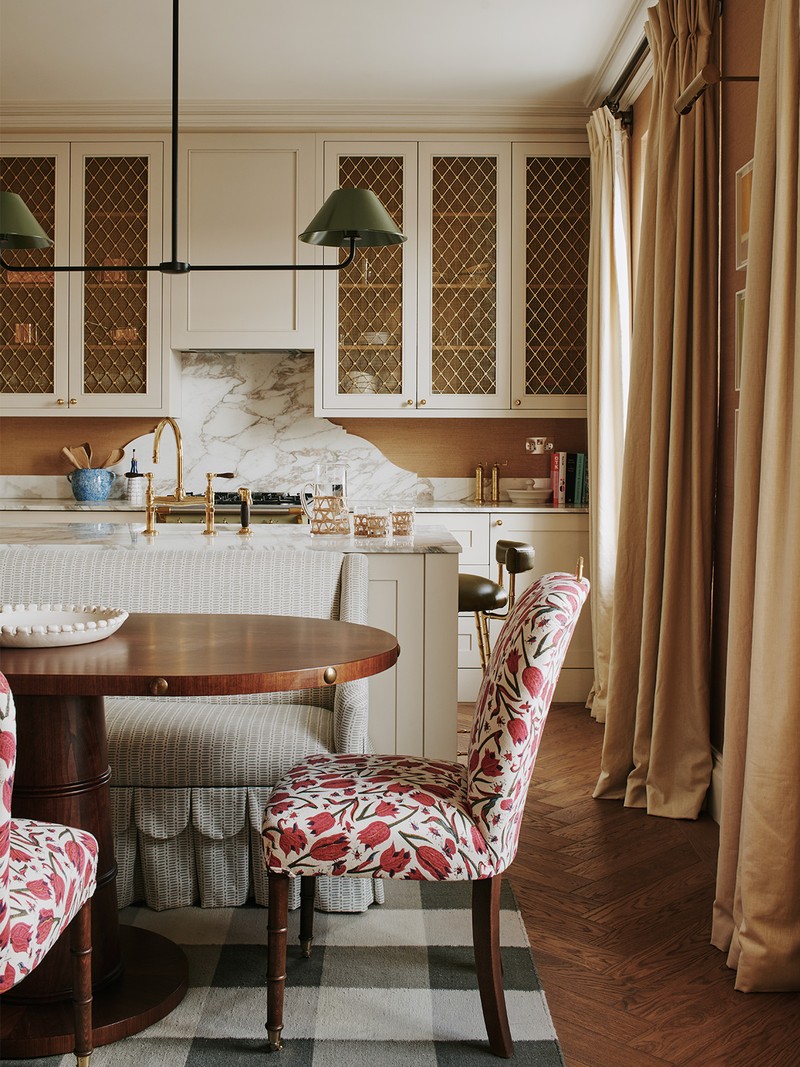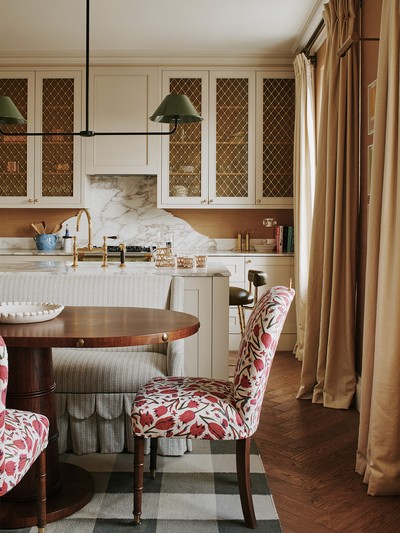

My Working Day: Interior Designer Nicole Salvesen
Mornings are busy. I like to exercise first thing before dropping the children off and walking the dog. It can be a challenge, but it is a brilliant feeling arriving at my desk knowing that I’ve already done some physical activity and am ready for the day ahead. I always check my diary before leaving home, but inevitably things crop up on our projects or with the team, so there tends to be a bit of adjustment when I arrive in the office. A quick skim of emails to address any urgent matters, then I check in with the team and answer any quick-fire questions they may have to set them off for the day.
We work closely and meet as a full team once a week. This way we can keep abreast of what everyone is up to, how each project or element of the business is progressing, and share knowledge and experience. Every day is different, which really suits me. If a day is office based, we can often spend hours in back-to-back meetings and on calls. We’ll bounce between designing for our projects, working on new products and launches for our in-house collection, and the general strategy for the brand.
Mary and I check in with all the teams on each project daily. For every project we allocate specific members of our design team. Because there is a lot going on at any one time, the team have become adept at making sure we schedule every task or presentation work in plenty of time, so we can ensure we stay on top of every project and ideally a step ahead of what is needed on site.
Though the project team run the day-to-day administration of our projects, Mary and I do all the design work with them. It’s important for us that our clients feel they can communicate with us whenever they want. This happens generally on email but we also have WhatsApp groups for all our projects, which helps keep track of all the moving parts.
The business has really grown. But we have ensured it has done so in a way that allows us to remain closely involved in the day to day and designs of all our interiors projects. Our preference is seeing clients face to face as much as possible.
The most challenging element of the business is having enough time for everything we want to achieve. That said, we have a great team who help us to realise so many exciting things. Our strategy is to continue to build a strong brand on all sides of the business. We don't see ourselves growing hugely beyond where we are now.
I think the technical detail that goes into interior design is often underestimated. We don’t just work on soft furnishings. We specify a lot of detail on the bones and layout. We have learnt that one of the biggest skills for an interior designer is being able to clearly show your clients what they are going to be getting – this helps build trust. Therefore, a lot of time is spent using technical design to create detailed presentation boards. We then turn one or two of these into a hand-drawn sketch of a room. That’s our chosen medium because it most suits our style of interiors.
We realised in lockdown that our team needed to get more technically skilled to keep up with the level of design needed for our growing projects. As a result, we focused on improving the skills of those already in our workforce, but also brought on new highly skilled designers. The result is something we are really proud of, as it never fails to impress clients and the other specialists we work with on projects.
We talk to the other members of the project team daily. It is an adage in this industry that so little of the work is actually creative. The majority of the time we are project managing or working on the procurement of a project – this is the most time consuming and involved part. Mary and I have been in the industry for around 20 years each and problem solving for our clients has become a passion of ours, so we remain closely involved.
Our projects are all over the world, so site visits really vary. Some will be technical meetings with the build and architectural team. A full walk around of a house can take several hours, often in freezing cold building sites – which remain that way even in the summer for some reason! When we go to a site visit on an international project, we will save up a larger list of things to achieve and check, so we are not wasting a moment.
We are passionate about seeing new launches and supporting new designers. We try and get out of the office to see showrooms and suppliers as much as possible. This can be so inspirational and is an important part of ensuring our projects are individual and tailored to each client. Wherever I am (restaurants, hotels, museums, historic houses), I am constantly taking photos and notes of all the details I see. Because I am naturally passionate about what I do, I am always curious about everything around me.
HR is always a challenge. We’ve adjusted how we address it over the years. We use in-house software to manage the day to day and outsource anything more specific to an agency. It is a part of legislation that is always changing, so it’s important we keep up to date. We brought our bookkeeping in-house very early on, and it is invaluable as an interior design business to have such brilliant support.
Functionality and practicality are important to us. We want our clients to feel like they can really live in their homes, rather than feel they are in a show home. Once we have worked out what a client’s needs are and how they live, we design each room to suit. This might be hardwearing or heavily patterned fabrics in a room that will be used by children, or bespoke furniture pieces throughout a home.
Staying relevant is important to us – but it has to be within the parameters of our design ethos which is heritage, timeless, classic interiors. So, we aren’t trend-led exactly, but we do want to make sure our designs are enduring. They have to be able to adapt to changing fashions over time. This might be fresh accessories or details, but only those that can adapt with our clients over time. Mary and I were both lucky to train under brilliant mentors who taught us how important it is for a brand to stay true to what it is, while also being capable of adapting to changing times and fashions.
Visit SalvesenGraham.com
DISCLAIMER: We endeavour to always credit the correct original source of every image we use. If you think a credit may be incorrect, please contact us at info@sheerluxe.com.

/https%3A%2F%2Fsw18.sheerluxe.com%2Fsites%2Fsheerluxe%2Ffiles%2Farticles%2F2024%2F02%2Fnicole-bathroom.png?itok=wava96RL)
/https%3A%2F%2Fsw18.sheerluxe.com%2Fsites%2Fsheerluxe%2Ffiles%2Farticles%2F2024%2F02%2Funtitled-7.png?itok=L5v2ApSy)


